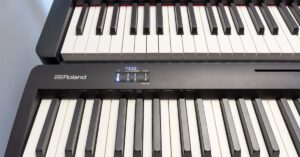Piano Transcriptions
When it comes to piano transcription, there are two main types of transcriptions. One involves playing a song that’s been transcribed in standard musical notation. The other involves playing an arrangement. Regardless of which type you choose, understanding the difference between the two is essential to mastering your instrument.
Standard musical notation consists of notes arranged at various points on a staff. Each note has a name and a symbol to indicate the note’s position. For example, a C# is a note in the A major scale. A treble clef is used for right hand notes and a bass clef is used for left hand notes.

Arrangements are similar to transcriptions, except that they change the important aspects of a piece of music. Arrangements may change the rhythm, form, or even the melody. They can also be grouped into separate parts. Some arranged works include “attack-sustain” effects, which create the impression of a continuous melody.
Piano Transcriptions – What Are the 2 Types of Piano Transcriptions?
The two basic forms of arrangements are binary and ternary. Binary is a two-part form, consisting of an A section and a B section. The B section is generally written after the A section, and contains different material. In ternary, the A section is repeated. These forms are usually written in one-hand, but sometimes a piano arrangement will have two-hand arrangements.
Whether or not you’re interested in learning a particular style of piano music, you should know the fundamentals of notation. Understanding dynamic markings can help you avoid frustration, and make your playing faster. Using symbols or abbreviations can also be helpful. Performing a piece with the proper dynamic markings can allow you to better understand the score.
Another important aspect of notation is the use of octaves. Octave refers to an eighth of a beat. This is usually a tone that’s eight full tones above the starting note. Octaves are used in the scale as a distance marker. Scales are also divided into octaves.
Occasionally, piano transcriptions will not have a bass part. This can be a benefit or a drawback. Sometimes musicians in cafes will play a transcribed version of a song. However, if you’re considering learning a song on the piano, it’s best to find an arranged version of it.
Many piano books are printed with symbols above each number. Symbols such as a b and d indicate that the notes are in a half step or a quarter step. It’s common to see a flat symbol, indicating a half step lower than the natural tone.
When transcribing a piece, it’s important to understand its structure. Knowing how a piece of music is constructed allows you to read it more quickly, and helps you better communicate with your listeners.
When it comes to piano transcription, the most common medium is standard musical notation. This means that you’ll see staffs with clefs at the top. You can then decide which note to play. If you’re unsure of a note’s name, consult the book’s instructions.